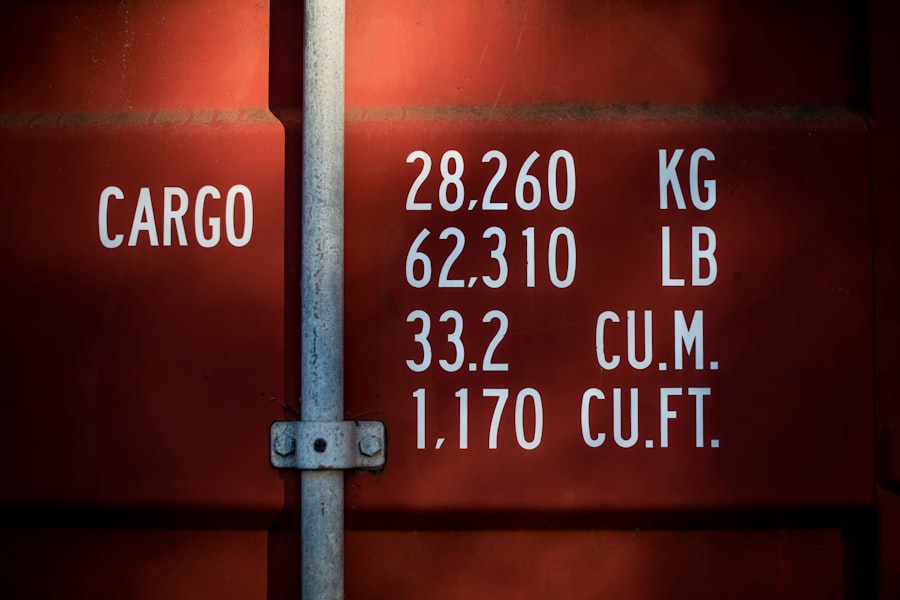The Drake Passage, a body of water that separates South America from Antarctica, is renowned for its tumultuous seas and unpredictable weather. Named after the English explorer Sir Francis Drake, who navigated these waters in the late 16th century, the passage has become a focal point for adventurers, researchers, and marine enthusiasts alike. Its significance extends beyond mere geography; it serves as a critical conduit for ocean currents and plays a vital role in the global climate system.
The Drake Passage is not just a geographical feature; it is a gateway to one of the most remote and pristine environments on Earth. Navigating the Drake Passage is often considered a rite of passage for those venturing to Antarctica. The waters are notorious for their rough conditions, which can challenge even the most seasoned mariners.
Despite its reputation, the passage attracts numerous expedition cruises each year, offering travelers a chance to witness the breathtaking beauty of the Antarctic landscape. The allure of the unknown and the promise of adventure draw many to this formidable stretch of ocean, making it a significant point of interest in maritime exploration.
Key Takeaways
- The Drake Passage is a body of water between South America’s Cape Horn and the South Shetland Islands of Antarctica, known for its challenging sailing conditions.
- The passage is characterized by strong winds, large waves, and unpredictable weather, making it one of the most treacherous sea routes in the world.
- The area is rich in wildlife, including penguins, seals, and whales, and has a significant historical and scientific importance.
- Navigating the Drake Passage requires careful planning, experienced crew, and adherence to safety regulations to avoid accidents and shipwrecks.
- Expeditions and cruises through the Drake Passage offer unique opportunities for adventure and scientific research, but travelers should be prepared for rough seas and extreme conditions.
Geographic Location and Characteristics
The Drake Passage lies between Cape Horn at the southern tip of South America and the Antarctic Peninsula. It spans approximately 800 kilometers (500 miles) in width and connects the Atlantic and Pacific Oceans. This strategic location makes it one of the most important maritime routes in the world, facilitating not only commercial shipping but also scientific research expeditions to Antarctica.
The passage is characterized by its deep waters, with depths reaching over 4,000 meters (13,000 feet), creating a unique underwater landscape that supports diverse marine ecosystems. The geographic features of the Drake Passage contribute to its notorious reputation. The convergence of cold Antarctic waters with warmer currents from the north creates a dynamic environment that can lead to sudden and severe weather changes.
The passage is also home to various islands, including the South Shetland Islands and the South Orkney Islands, which serve as waypoints for vessels navigating these challenging waters. The combination of deep channels, strong currents, and shifting weather patterns makes the Drake Passage a fascinating yet formidable area for exploration.
Weather and Climate Conditions

The weather in the Drake Passage is notoriously unpredictable, characterized by strong winds, heavy seas, and rapidly changing conditions. The region experiences a maritime climate influenced by its proximity to Antarctica, resulting in cool temperatures year-round. During the summer months (November to March), temperatures can range from -2°C to 10°C (28°F to 50°F), while winter months can see temperatures plummet even further.
The passage is also known for its frequent storms, which can arise with little warning, creating hazardous conditions for vessels. The unique climatic conditions of the Drake Passage are largely due to its geographical position. The meeting of different oceanic currents creates a turbulent environment that can lead to high waves and rough seas.
Sailors often describe the experience of crossing the Drake as both exhilarating and daunting, as they navigate through swells that can reach heights of up to 15 meters (50 feet). Understanding these weather patterns is crucial for anyone planning to traverse this challenging waterway.
Historical Significance and Exploration
| Exploration Event | Year | Significance |
|---|---|---|
| Discovery of America | 1492 | Led to the Columbian Exchange and the eventual colonization of the Americas |
| Moon Landing | 1969 | Marked the first time humans set foot on another celestial body |
| Marco Polo’s Travels | 1271-1295 | Opened up trade routes between Europe and Asia |
The historical significance of the Drake Passage is deeply intertwined with maritime exploration and discovery. Sir Francis Drake was one of the first Europeans to navigate these waters during his circumnavigation of the globe in the late 1500s. His journey not only opened up new trade routes but also paved the way for future explorers seeking to uncover the mysteries of Antarctica.
Over the centuries, numerous expeditions have ventured into the Drake Passage, each contributing to our understanding of this remote region. In addition to its role in exploration, the Drake Passage has also been a site of significant scientific research. The passage serves as a natural laboratory for studying oceanography, climate change, and marine biology.
Researchers have conducted numerous studies in these waters, examining everything from ocean currents to the impact of human activity on marine ecosystems. The historical context of exploration in the Drake Passage continues to influence contemporary scientific endeavors, highlighting its importance as both a geographical landmark and a site of ongoing inquiry.
Wildlife and Marine Life
The Drake Passage is teeming with diverse wildlife and marine life, making it a hotspot for biodiversity. The nutrient-rich waters support an array of species, including krill, which serves as a crucial food source for many marine animals. Various species of whales, such as humpback whales, orcas, and blue whales, can be spotted in these waters during their migratory journeys.
Additionally, seabirds like albatrosses and petrels are commonly seen soaring above the waves, taking advantage of the strong winds that characterize the region. The unique ecosystem of the Drake Passage is not only vital for marine life but also plays a significant role in global ecological health. The interaction between different species creates a complex food web that sustains both predator and prey.
Conservation efforts are increasingly focused on protecting this delicate environment from threats such as overfishing and climate change. As awareness grows about the importance of preserving marine biodiversity, the Drake Passage remains a focal point for conservationists and researchers alike.
Navigation Challenges and Hazards

Navigating the Drake Passage presents numerous challenges and hazards that require careful planning and expertise. The unpredictable weather patterns can create treacherous conditions at any moment, with strong winds and high waves posing significant risks to vessels. Additionally, the presence of icebergs and sea ice during certain times of the year adds another layer of complexity to navigation in these waters.
Mariners must be vigilant and prepared for sudden changes in conditions that could impact their journey. The strong currents within the Drake Passage can also create navigation difficulties. The confluence of different oceanic currents can lead to turbulent waters that may affect a vessel’s course and speed.
For those unfamiliar with these waters, it is essential to have accurate charts and reliable navigation equipment on board. Experienced crews often rely on their knowledge of local conditions and historical data to make informed decisions while traversing this challenging passage.
Safety Precautions and Regulations
Given the inherent risks associated with navigating the Drake Passage, safety precautions and regulations are paramount for all vessels operating in these waters. International maritime organizations have established guidelines to ensure safe passage through this challenging region. These regulations include requirements for proper vessel equipment, crew training, and emergency preparedness measures.
Compliance with these standards is essential for minimizing risks and ensuring the safety of both crew members and passengers. In addition to regulatory measures, vessels traversing the Drake Passage often implement their own safety protocols based on their specific operational needs. This may include conducting regular safety drills, maintaining communication with other vessels in the area, and monitoring weather forecasts closely.
By prioritizing safety and adhering to established regulations, mariners can navigate this formidable passage with greater confidence.
Statistics on Shipwrecks and Accidents
The Drake Passage has earned a reputation for being one of the most dangerous maritime routes in the world due to its history of shipwrecks and accidents. While exact statistics can vary over time, it is estimated that dozens of vessels have met their fate in these treacherous waters over the centuries. Factors such as severe weather conditions, navigational errors, and mechanical failures have all contributed to incidents in this region.
Mariners must remain vigilant and prepared for emergencies at all times. Historical accounts serve as reminders of the importance of respecting this powerful body of water and understanding its potential dangers.
By learning from past incidents, modern sailors can take proactive measures to enhance safety while navigating these challenging waters.
Facts about Expeditions and Cruises
Expeditions and cruises through the Drake Passage have become increasingly popular among adventure seekers and nature enthusiasts alike. Each year, thousands embark on journeys that take them across this iconic waterway en route to Antarctica’s breathtaking landscapes. These expeditions often include opportunities for wildlife viewing, educational lectures from experts, and guided excursions on land once they reach their destination.
Travelers are drawn not only by the allure of Antarctica but also by the unique experience of crossing the Drake Passage itself. Many expedition companies offer itineraries that highlight both the challenges and wonders of this journey. Passengers often share stories of their experiences navigating through rough seas while marveling at stunning vistas along the way.
The combination of adventure and education makes expeditions through the Drake Passage an unforgettable experience for those who dare to venture into its depths.
Research and Scientific Studies
The Drake Passage serves as an important site for scientific research across various disciplines, including oceanography, climate science, and marine biology. Researchers utilize this unique environment to study ocean currents’ effects on global climate patterns and investigate how changes in temperature impact marine ecosystems. The passage’s rich biodiversity provides valuable insights into species interactions and adaptations in extreme environments.
Numerous research expeditions have been conducted in these waters over the years, contributing significantly to our understanding of oceanic processes and climate change impacts. Scientists often collaborate with expedition companies to facilitate data collection while providing educational opportunities for passengers onboard. This synergy between research and tourism highlights how exploration can contribute positively to scientific knowledge while fostering awareness about environmental conservation.
Tips for Navigating the Drake Passage
For those planning to navigate the Drake Passage—whether on an expedition cruise or as part of a research mission—there are several essential tips to consider for a safe journey. First and foremost is thorough preparation; understanding weather patterns, current conditions, and potential hazards is crucial before setting sail. Mariners should equip their vessels with reliable navigation tools and ensure that all safety equipment is readily accessible.
Regularly checking weather updates allows crews to make informed decisions about their course while remaining adaptable to changing conditions. Finally, fostering a culture of safety onboard—where crew members are encouraged to voice concerns or report issues—can help mitigate risks associated with navigating this challenging waterway.
In conclusion, navigating the Drake Passage requires careful consideration of various factors ranging from weather conditions to safety regulations. This iconic body of water holds immense historical significance while serving as a vital ecosystem teeming with life. As adventurers continue to explore its depths through expeditions or research missions alike, understanding its complexities will remain essential for ensuring safe passage across one of nature’s most formidable challenges.
The Drake Passage, a crucial waterway connecting the Atlantic and Pacific Oceans, is renowned for its challenging navigation conditions and significant role in global ocean circulation. For those interested in exploring more about the geographical and environmental aspects of this region, an insightful article can be found on MyGeoQuest. This article delves into the unique characteristics and statistics of the Drake Passage, offering a comprehensive understanding of its impact on marine biodiversity and climate patterns. To read more about this fascinating topic, visit the article on MyGeoQuest.
WATCH NOW! Drake Passage: Earth’s Deadliest Waters Revealed
FAQs
What is the Drake Passage?
The Drake Passage is the body of water between the southern tip of South America and the northern tip of the Antarctic Peninsula. It is known for its rough seas and challenging sailing conditions.
What are some statistics about the Drake Passage?
The Drake Passage is approximately 500 miles wide and is the shortest crossing from Antarctica to any other landmass. It is also one of the windiest and roughest seas in the world, with waves reaching heights of up to 30 feet.
How long does it take to cross the Drake Passage?
The crossing of the Drake Passage can take anywhere from 2 to 4 days, depending on weather conditions and the size and speed of the vessel.
What is the weather like in the Drake Passage?
The weather in the Drake Passage is characterized by strong winds, rough seas, and rapidly changing conditions. It is known for its stormy and unpredictable weather, with frequent low-pressure systems and high winds.
What wildlife can be found in the Drake Passage?
The Drake Passage is home to a diverse range of wildlife, including various species of seabirds, whales, and seals. It is a popular destination for wildlife enthusiasts and birdwatchers.
